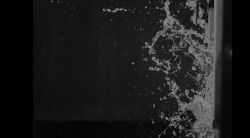Marine icing: Detection and modelling

Working in harsh environments has many challenges. The first thing that comes to mind is the challenge of navigating through icy waters, but equally important are the challenges associated with ice build up on vessels. Ice buildup can quickly damage vessels and equipment and make them unstable. This, in turn, puts the lives of the people who work on such vessels in danger. The Marine Icing Research Group at Memorial, which consists of Dr. Yuri Muzychka and a team of faculty and graduate student researchers, is working to develop new technologies that will accurately predict and monitor marine icing conditions to help prevent ice buildup.
“When ice isn’t managed properly, it could mean that life boats on board can not be launched in an emergency evacuation situation because the locks that attach them to the vessel are frozen,” explained Dr. Muzychka. “The accurate prediction of ice buildup on vessels and their sub-structures is critically important for designers and operators of marine vessels that will be employed in harsher climates. Additionally, ice buildup on mooring and towing lines is also problematic, and operation of exploration vessels for Arctic resource development require that they be kept free of significant levels of ice.”
Current technologies make it easy to detect ice in fresh water environments and atmospheric ice conditions for aeronautical and/or land based structures, but do not work well for marine conditions due to the complex nature of marine structures and the ocean conditions leading to icing. Dr. Muzychka and his team are developing new sensors and icing models that will be able to better predict and monitor icing conditions and the rate at which the ice forms on vessels and their sub-structures.
These new sensors will assist in predicting the rate of ice accretion, or buildup, given certain environmental conditions. This information would then be used to determine mitigation strategies and their effectiveness.
Accurate prediction methods are also needed with environmental conditions as inputs, such as wind speed, air and sea temperatures, rain and sea spray fluxes. More sophisticated models will consider the geometry of the vessel and/or platform as an input as well. For example, horizontal, inclined, or vertical surfaces or flat versus curved surfaces.
The outcomes of the research are significant – improved understanding of icing mechanisms, improved detection/assessment strategies, increased safety and a reduction in operating costs.
Statoil Inc. is sponsoring the research in conjunction with Mitacs and the Petroleum Research Newfoundland and Labrador. The Marine Icing Research Group consists of six master’s students, three PhD students, one Post Doctoral Fellow, and six faculty researchers. The proposed project will train 10 HQP at various levels, providing new expertise in the marine engineering field in the area of winterization of vessels.